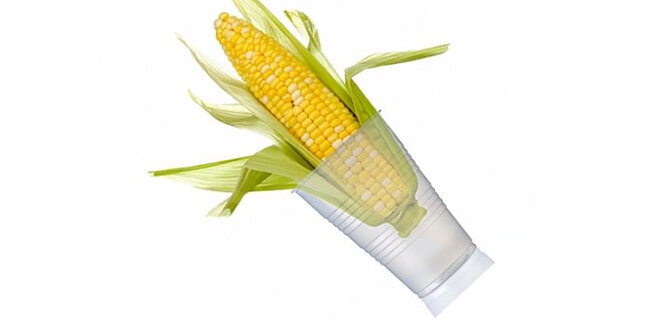Bioplastics- Numerous Environmental Benefits Enhance Its Versatility

14 Sep
2016
A recent statistic by the United Nations’ Joint Group of Experts on Aspects of Marine Pollution (GESAMP), states that nearly 60–95% of waste polluting the world’s water bodies is caused by plastic debris. Plastic has become an indispensable part of daily lives, with its versatile uses and low-cost availability. Alarmingly, global population show a greater propensity to continue its usage, despite knowing that it is non-biodegradable and hazardous to the environment. However, the millennial consumers are now consciously making an effort to reduce their carbon footprints by minimizing their overall plastic consumption. The increasing awareness about environmental degradation, leading to global warming, and climate change is the key reason behind this. The urgent need to find better alternatives to plastic, have resulted in the emergence of bioplastics that are produced from natural polymers and renewable feedstock.
Allied Market Research has conducted a study on the bioplastics market, and outlines the popularity of this sector. It forecasts that the industry is set to grow at a CAGR of 14.8% for the period 2015–2020, with its market size estimated to reach $30.8 billion by the end of 2020. Different segments of this market include a variety of biodegradable and non-biodegradable bioplastics. There is huge potential for the market, as there are many driving factors supplementing its growth.
Beverage companies spark off the Bio-PET bottles trend
There are a wide range of non-biodegradable bioplastics, such as Bio-PA, Bio-PE, Bio-PTT, Bio-PUR, and Bio-PET. Among these, the Bio-PA (Polyamide) and Bio-PET (Polyethylene Terephthalate) polymers are the fastest growing segments. While PA is used in high-performance automotive fuel lines and pneumatic airbrake tubing, the latter is increasingly employed in food and beverage packaging. PET is highly resistant and safe material. It possesses the ability to act as a UV and CO2 barrier, which is crucial to preserve the organoleptic qualities of packaged foodstuffs. The material is not entirely disposable, but it is 100% recyclable, reusable, and has a smaller footprint on the environment. A large number of beverage companies now rely on this substance for safe, durable, and eco-friendly packaging.
Coca-Cola is one such company that has been quick to check its ecological footprint, with its breakthrough innovation of PlantBottle™. It was first produced with a composition of plant and purified terephthalic acid (PTA), in a ratio of 30:70. Recently, they launched a newer version that boasts of being the world’s first bio-PET bottle made entirely of plant material. It uses patented technology to convert natural sugars and waste from sugarcane manufacturing process to create the reusable bottles. PepsiCo had earlier announced a similar bio-based PET drink bottle made from switch grass, pine and corn husks. Such competitive strategies progressively address the need for more accountable plant-based substitute to traditional packaging, and reduce the dependency on non-renewable fossil fuels. This leads to higher demand pull for higher bioplastics market, and increased investment on its production by producers/manufacturers.
Market encouraged by bioplastics innovation
North America and Asia-Pacific are the largest markets for bioplastics, given the lower cost of production and high availability of renewable feedstock there. The European region has also shifted its focus on promotion of environmental policies by urging promotion of R&D investments on alternative plastic solutions. Researchers and businesses are engaged in developing high-performance bioplastics and innovating bio-based building blocks. The attention is on producing materials that can withstand higher temperatures. Such factors decrease the reliance of many industries on petroleum-based engineering plastics, thereby enhancing the size of the bioplastics market. For instance, Novamont Spa has teamed up with the French Barbier Group to come up with a biodegradable, lightweight plastic bag for fruit and vegetable packaging. Made from locally sourced cornstarch and sunflower oil, it is entirely home compostable. These encouraging developments also help in evolving a circular economy with smooth energy transition.
Bioplastic Feedstock Alliance explores alternative feedstock
The production of Poly Lactic Acid (PLA) bioplastics is supplemented by first and second-generation feedstocks, such as corn stove, wheat straw, sugarcane, sugar beet, corn, cassava, and wood chips. This puts a major demand pressure on the crop production for non-food requirements, resulting in competition with food production. These can turn into critical challenges for the bioplastics market, since it is reliant on a variety of crops for biological raw materials. To combat the problems associated with food security, and selection of feedstock for bioplastics production, the Bioplastic Feedstock Alliance (BFA) was formed. Its founding members include Coca-Cola, DANONE, Ford Motor Company, Nestle, Nike, Inc., P&G, and Unilever. This association was convened by the World Wildlife Fund (WWF) to enable BFA’s progress toward realizing its important objectives. The alliance calls upon leading experts for responsible evaluation as well as selection of feedstock based on food security, biodiversity, and land use. The BFA promotes a more sustainable flow of materials that aids in moving the bioplastics industry’s emerging supply chain in a positive direction.
The world bioplastics market is an emerging market with immense potential for pioneering inventions of biodegradable polymers. Many researchers and key players are engaged in improving the performance standards and enhancing the large-scale production of bioplastics. The industry is spread over a large competitive landscape consisting of manufacturers such as Novamont Spa, Braskem, Corbion Purac, and Cardia Bioplastics. The environment-friendly nature and high consumer acceptance of these materials, that are widely used in agriculture, horticulture, textile, automotive, construction, and packaging industries. Reigning government bodies encourage the consumption of sustainable products. The bioplastics industry is benefitting from legislations that ban the use of conventional plastics. Governments allow tax exemptions and subsidies for businesses that employ greener packaging modules. It has gone as far as funding businesses that exclusively cater to this industry. These forces have led to a substantial increase in market size and proving the bioplastics sector is a rapidly growing one.

Akhilesh Prabhugaonkar
Author's Bio- Akhilesh Prabhugaonkar holds a bachelor’s degree in Electronics Engineering from the reputed Vishwakarma Institute of Technology. He has a special interest in the fields of forensics, world history, international relations and foreign policy, sports, agriculture, astronomy, security, and oceanography. An ardent bibliophile and melophile, Akhilesh loves to write on topics of his interest and various other societal issues. This love for writing made him enter the professional world of content writing and pursue his career in this direction.
Avenue: Entire Library membership of Allied Market Research Reports at your disposal
- Avenue is an innovative subscription-based online report database.
- Avail an online access to the entire library of syndicated reports on more than 2,000 niche industries and company profiles on more than 12,000 firms across 11 domains.
- A cost-effective model tailored for entrepreneurs, investors, and students & researchers at universities.
- Request customizations, suggest new reports, and avail analyst support as per your requirements.
- Get an access to the library of reports at any time from any device and anywhere.
Related Post
-
Cash in Transit: How Advanced Telematics Improves the Security of Financial Service Businesses?
-
How Are Space Companies Reacting to the Growing Importance of Space Debris Monitoring and Removal?
-
How Is Integration of Teleradiology in Healthcare Businesses a Profitable Decision?
-
Revolutionary Technologies That Optimize the Potential of Minibus Businesses
-
Why Apparel Businesses Heavily Invest in Online Clothing Rental Services?
-
Herbal Tea: Why Is the Adoption of Sustainable Extraction and Packaging Techniques on the Rise?








